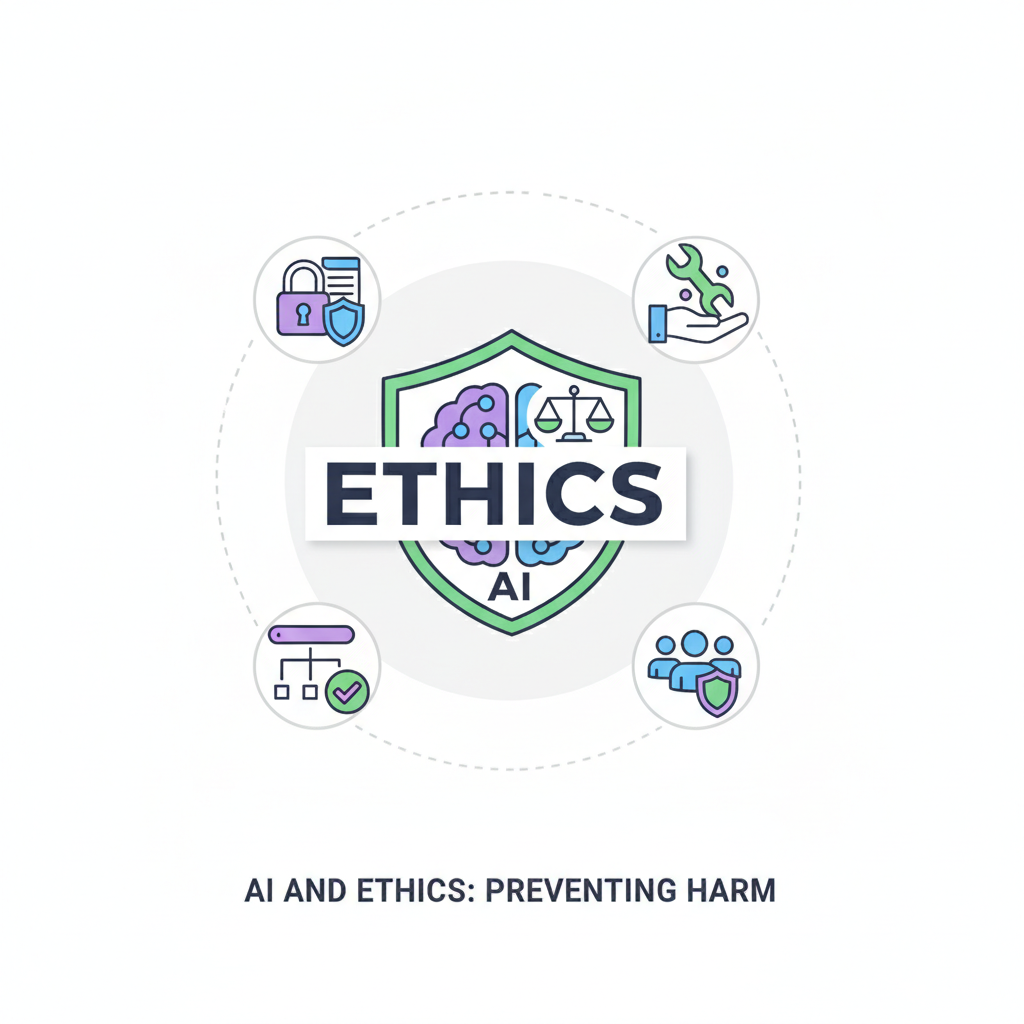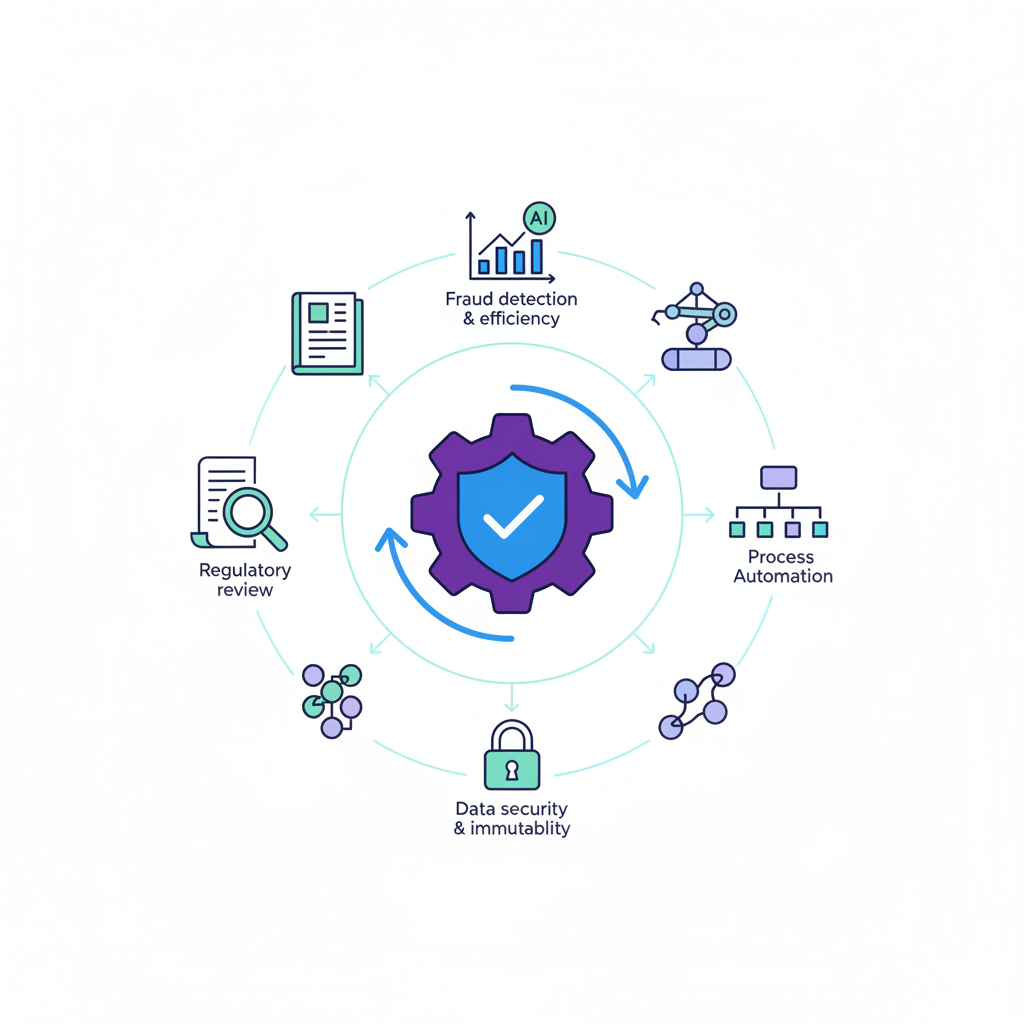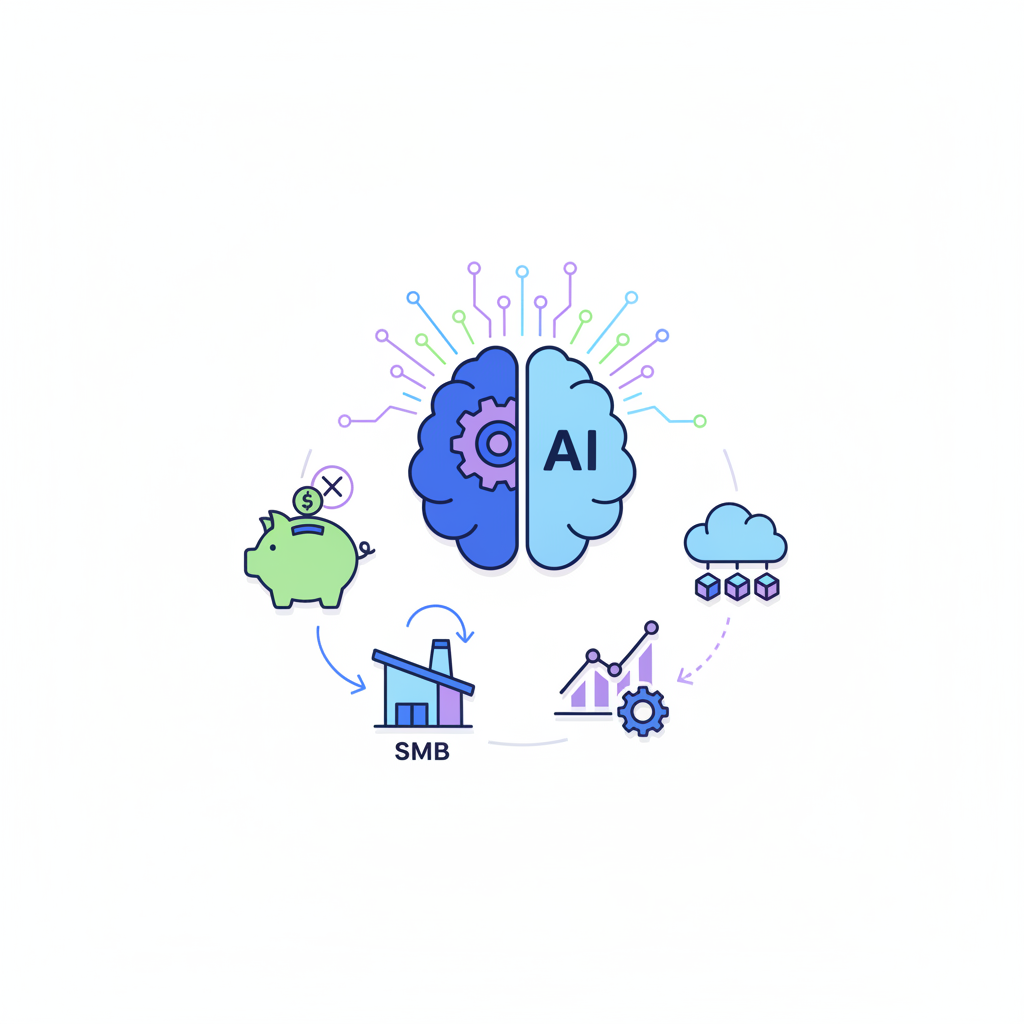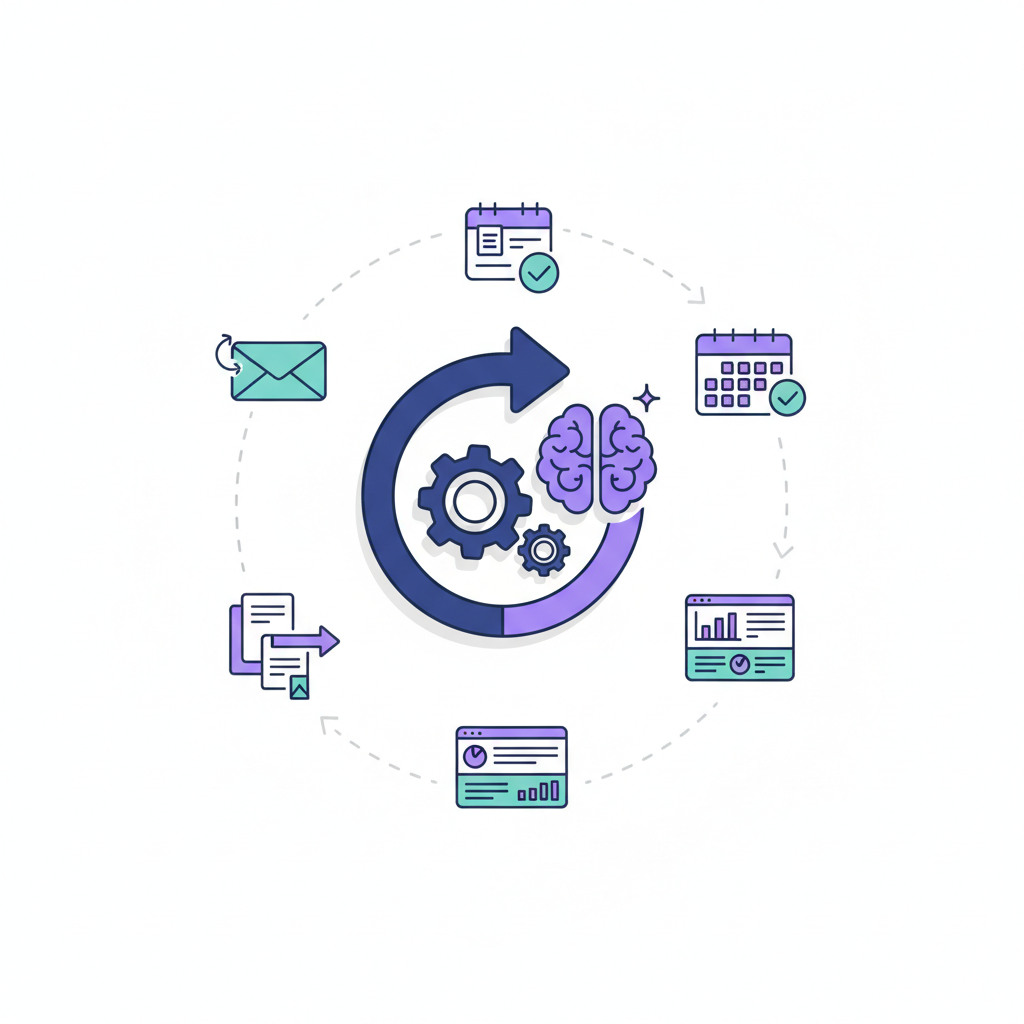Navigating the AI Revolution: Preventing Harm, Ensuring Progress
Artificial Intelligence stands at a pivotal juncture in human history, offering a dual promise of unprecedented progress and profound peril. From revolutionizing medical diagnostics and accelerating scientific discovery to powering autonomous vehicles and optimizing global logistics, the potential benefits of AI are vast and transformative. Yet, alongside this incredible promise, there looms a growing awareness of the significant and urgent need to address and prevent potential harms posed by AI. These artificial intelligence risks span a wide spectrum, from subtle biases embedded in algorithms that perpetuate societal inequalities to the more existential concerns surrounding advanced autonomous systems. The ethical implications of AI are no longer theoretical discussions for academics; they are pressing challenges that demand immediate and comprehensive solutions.
The rapid advancement of AI technologies necessitates a proactive approach to preventing AI harm. We must move beyond simply reacting to incidents and instead build robust frameworks that guide the responsible development and deployment of these powerful tools. This article will explore a comprehensive framework of ethical AI principles, actionable strategies, and robust governance models that are essential for preventing AI from causing harm and ensuring its responsible development. We will delve into understanding the diverse range of AI ethics challenges, establishing foundational ethical principles, implementing safeguards through design, ensuring technical robustness, and fostering a collaborative environment for accountability. By examining these key areas—understanding risks, ethical foundations, design principles, governance, accountability, and future challenges—we aim to provide a clear roadmap for navigating the AI revolution responsibly, ensuring that its progress benefits all of humanity without inadvertently causing harm. The future of AI depends on our collective commitment to these principles.
Understanding the Spectrum of AI Risks and Potential Harms
The transformative power of artificial intelligence comes with an equally significant spectrum of artificial intelligence risks that demand careful consideration and proactive mitigation. These potential harms are not monolithic; they range from subtle, pervasive societal impacts to more direct, individual infringements, and even theoretical catastrophic AI risks. It's crucial to differentiate between unintended consequences, which often arise from oversight, incomplete data, or unforeseen interactions, and the more sinister possibilities of malicious AI use, where AI is deliberately employed to cause harm. Understanding these distinctions is the first step in mitigating AI risks effectively.
Categorizing Societal and Individual Harms
One of the most widely discussed AI ethics concerns is Bias and Discrimination. AI systems, particularly those trained on historical data, can inadvertently perpetuate or even amplify existing societal inequalities. For instance, facial recognition systems have shown higher error rates for certain demographics, and hiring algorithms have been found to favor male candidates due to biased training data. This can lead to unfair outcomes in critical areas like justice, finance, and employment.
Privacy Concerns are another significant area of vulnerability. The pervasive collection and analysis of personal data by AI systems raise serious questions about surveillance, data security, and the erosion of individual privacy. AI-powered monitoring tools, if unchecked, could lead to unprecedented levels of personal data exposure and control, impacting civil liberties.
Furthermore, AI's capacity for sophisticated pattern recognition and content generation poses risks of Social Manipulation & Misinformation. Algorithms designed to maximize engagement can inadvertently create echo chambers, polarize public opinion, and be exploited to spread AI misinformation or propaganda. Deepfakes, for example, demonstrate AI's potential to create convincing but fabricated content, making it difficult for individuals to discern truth from falsehood, thereby undermining trust and social cohesion.
Addressing Catastrophic and Existential AI Safety Concerns
Beyond individual and societal harms, there are profound AI safety concerns regarding advanced AI systems. The ethics of autonomous weapons is a particularly contentious area. The prospect of AI systems making life-or-death decisions on the battlefield without human intervention raises moral and practical dilemmas that could redefine warfare and international stability.
Systemic Risks also loom large. AI-driven automation could lead to widespread AI job displacement, exacerbating economic inequality. Moreover, if critical infrastructure (energy grids, financial markets) becomes overly reliant on complex AI systems, a failure or attack on these systems could have devastating, cascading effects, threatening national security and economic stability.
Finally, the theoretical but increasingly discussed Advanced AI Risks involve the potential for superintelligence or rogue AI. While speculative, these concerns explore scenarios where highly advanced AI systems could operate beyond human control, potentially leading to unintended or even malicious outcomes that pose an existential threat to humanity. Preventing such scenarios requires foresight and robust preventing AI harm strategies today.
The Foundational Principles: How Can AI Be Ethical?
The question of "How can AI be ethical?" is central to preventing AI harm and ensuring its beneficial integration into society. The answer lies in establishing and rigorously adhering to a set of core ethical principles that guide every stage of AI development and deployment. These principles serve as a moral compass, translating abstract ideals into actionable values that directly contribute to ethical AI systems. While various frameworks exist globally, such as the EU’s High-Level Expert Group on AI guidelines or the OECD AI Principles, they largely converge on a common set of ethical considerations of artificial intelligence, emphasizing human well-being and societal benefit.
Deconstructing the '7 Principles of Ethical AI'
A widely recognized framework, often referred to as the '7 Principles of Ethical AI', provides a robust foundation for AI ethics:
- Fairness and Non-discrimination: This principle demands that AI systems treat all individuals and groups equitably, ensuring unbiased outcomes and actively working to prevent AI bias and discrimination.
- Transparency and Explainability: To foster trust and enable oversight, AI systems must be transparent. This involves understanding how AI makes decisions, often referred to as Explainable AI (XAI).
- Accountability and Governance: This principle addresses the critical need for assigning responsibility for AI actions and their consequences. Robust AI accountability and transparency mechanisms ensure that when harm occurs, there are clear lines of responsibility.
- Human-Centricity and Oversight: Ethical AI prioritizes human well-being and agency. It mandates that humans retain meaningful control over AI systems, ensuring that AI serves humanity.
- Privacy and Data Governance: Protecting personal data and user autonomy is paramount. This principle emphasizes secure data handling, informed consent, and adherence to data protection regulations, safeguarding individuals from AI privacy concerns.
- Safety and Robustness: AI systems must be reliable, secure, and resilient. This means designing them to operate safely, withstand errors, and resist malicious attacks, thereby mitigating AI risks.
- Societal and Environmental Well-being: This broader principle encourages developers to consider the wider impact of AI on society and the environment, ensuring that AI contributes positively to sustainable development.
Translating Principles into Actionable Values
Translating these principles into practice requires a commitment to Value Alignment. This involves engineering AI systems to inherently align with human values, societal norms, and legal frameworks from their inception. Furthermore, Proactive Ethical Assessment is crucial. This means integrating ethical review and impact assessments throughout the entire AI lifecycle, from conception and design to deployment and monitoring, rather than treating ethics as an afterthought. By doing so, organizations can identify and address potential ethical issues before they manifest as harm, ensuring that ethical considerations of artificial intelligence are a continuous part of the development process.
Ethical AI by Design: Building Safeguards from the Ground Up
To truly succeed in preventing AI harm, the focus must shift from reactive mitigation to proactive prevention. This means embedding ethical AI considerations directly into the design and development process, a methodology often termed "ethics by design". This approach ensures that safeguards are not bolted on as an afterthought but are fundamental components of the AI system from its inception. By adopting practical methodologies and actionable steps, developers and organizations can build systems that are inherently safer, fairer, and more trustworthy, thereby bolstering AI safety from the ground up.
Implementing 'Ethics by Design' Methodologies
Ethics by design is a comprehensive strategy that integrates ethical considerations into every phase of the AI lifecycle. It involves a suite of proactive measures:
- Privacy-by-Design: This means integrating privacy considerations from the outset, designing AI systems with data minimization, anonymization, and robust access controls as core architectural components. This helps to proactively address AI privacy concerns.
- Fairness-by-Design: To combat AI bias and discrimination, fairness-by-design employs various techniques for detecting and mitigating bias in both the training data and the algorithms themselves, ensuring equitable outcomes.
- Security-by-Design: Building robust defenses against vulnerabilities and attacks is paramount for AI safety. This means incorporating security measures at every layer of the AI system, from data ingestion to model deployment, to protect against malicious AI use.
The Role of Human Oversight and Explainable AI (XAI)
Even with the most robust ethics by design principles, human involvement remains indispensable for preventing AI harm.
- Human-in-the-Loop (HITL): This approach involves designing systems where humans retain meaningful control and intervention points. Instead of fully automating critical decisions, HITL ensures human experts can review, validate, and override AI recommendations in high-stakes scenarios.
- Explainable AI (XAI): Developing tools and methods to make AI decisions interpretable to humans is crucial for trust and accountability. XAI aims to shed light on the "black box" nature of complex AI models, allowing users to understand *why* an AI system arrived at a particular conclusion.
- Iterative Testing and Validation: Continuous evaluation for ethical performance and unintended consequences is a non-negotiable part of ethical AI development. This involves rigorous testing, including adversarial testing, and ongoing monitoring of AI systems in real-world environments.
Robustness and Security: Protecting AI Systems from Malice and Error
Beyond ethical principles and design methodologies, the practical implementation of AI safety hinges on ensuring the technical robustness and security of AI systems. Preventing AI harm requires a deep understanding of the vulnerabilities inherent in these complex systems and proactive measures to protect them from both unintentional errors and malicious AI use. This section delves into the technical aspects of mitigating AI risks by focusing on system reliability, resilience, and defense against cyber threats.
Ensuring AI System Reliability and Resilience
Reliable AI systems are those that consistently perform as expected, even under challenging or unforeseen circumstances. Resilience ensures they can recover from failures or attacks.
- Adversarial Robustness: AI models can be tricked by subtly perturbed inputs ("adversarial attacks"). Developing ethical AI systems requires investing in adversarial robustness techniques to defend against such inputs, ensuring the AI performs reliably even when faced with sophisticated manipulation attempts.
- Error Handling and Fault Tolerance: AI safety demands that systems are designed to gracefully handle unexpected situations and failures. This includes robust error detection, fallback procedures, and the ability to degrade gracefully, minimizing disruption and potential harm in critical infrastructure.
- Data Integrity and Provenance: Protecting training data from corruption, unauthorized alteration, or malicious injection is vital. Tracking data provenance (origin and transformations) helps in identifying the source of potential biases or errors, maintaining the reliability and fairness of ethical AI systems.
Countering Malicious Use and Cyber Threats
The increasing sophistication of AI also opens new avenues for cyber threats and malicious AI use. Protecting AI systems requires a dedicated focus on security.
- Threat Modeling for AI: Traditional threat modeling needs to be adapted for AI systems. This involves systematically identifying potential attack vectors and misuse scenarios specific to AI, such as data poisoning or model inversion attacks. This proactive approach is key to preventing AI harm from deliberate attacks.
- Secure Deployment and Monitoring: The deployment environment must be secured, protecting the model itself from theft or tampering. Continuous monitoring of AI models in production environments is essential to detect anomalous behavior, identify potential attacks, or spot performance degradation that could lead to unintended harm.
- Ethical Hacking and Red Teaming: Proactive security testing involves simulating real-world attacks on AI systems (including testing for adversarial robustness) to identify vulnerabilities before malicious actors can exploit them. This strengthens the AI security posture and builds more resilient applications.
Governance and Policy: Establishing Guardrails for AI Development
While ethical principles and technical safeguards are crucial, their effectiveness is amplified by robust AI governance and policy frameworks. Establishing clear guardrails for AI development is essential for preventing AI harm on a systemic level. This involves a multi-layered approach, encompassing national and international regulations, industry standards, and a commitment to adaptable frameworks. Effective AI ethics requires a collaborative effort across governments, industry, academia, and civil society.
National and International Regulatory Frameworks
Governments worldwide are grappling with how to regulate AI, recognizing both its potential and its risks.
- Government Regulations: Nations and blocs are developing comprehensive regulatory frameworks, such as the EU AI Act, which proposes a risk-based approach, imposing stricter requirements on high-risk applications. These regulations aim to provide legal certainty and ensure ethical AI development.
- Industry Standards and Certifications: Industry bodies are developing standards and certifications for ethical AI, covering areas like data quality and bias detection. Adherence to such standards builds consumer trust and demonstrates a commitment to responsible practices.
- International Cooperation: Given AI's borderless nature, preventing AI harm requires international cooperation. Global agreements and dialogues are necessary to address cross-border AI challenges, such as the regulation of autonomous weapons and the prevention of malicious AI use.
Developing Standards and Best Practices
Beyond formal regulations, a culture of ethical AI is fostered through the development and adoption of practical guidelines and best practices.
- Ethical Guidelines for Developers: Providing clear, actionable ethical guidelines for AI practitioners is fundamental, helping them navigate complex dilemmas in their day-to-day work. Integrating AI ethics training is crucial.
- Impact Assessments: Mandating ethical and societal impact assessments for high-risk AI systems is a powerful tool for proactive preventing AI harm. These evaluations systematically identify, analyze, and mitigate potential negative consequences related to AI bias and discrimination or AI job displacement.
- Whistleblower Protections: Establishing robust whistleblower protections ensures that employees who identify potential ethical breaches or safety risks within AI development are safeguarded. This strengthens the overall AI safety culture.
Fostering Accountability and Transparency in AI Systems
The journey towards ethical AI is incomplete without robust mechanisms for AI accountability and transparency. When AI systems make decisions that impact individuals or society, it is paramount to understand who is responsible and how those decisions were reached. This section details the frameworks and practices necessary to ensure responsibility for AI actions, build trust through openness, and address the inherent challenges in achieving true accountability and transparency in complex AI systems, thereby mitigating AI risks.
Mechanisms for AI Accountability
Assigning responsibility for the actions and consequences of AI is a complex but essential task for preventing AI harm.
- Auditing and Oversight: Independent review of AI systems is critical for ensuring compliance with AI ethics principles. Regular audits of algorithms, data, and operational processes by third-party experts verify that systems are fair, secure, and operating as intended.
- Legal Liability: Establishing clear legal frameworks for assigning responsibility for harm caused by AI is a significant challenge. Defining these legal boundaries is essential for providing redress to victims and incentivizing responsible ethical AI development.
- Ethical Review Boards: Internal or external bodies, similar to Institutional Review Boards (IRBs), can provide a proactive layer of accountability by assessing the ethical implications of new AI projects and ensuring adherence to AI ethics guidelines before deployment.
Enhancing AI Transparency and Explainability
Transparency builds trust and enables effective oversight, making it a cornerstone of ethical AI.
- Documentation and Record-Keeping: Maintaining clear, comprehensive records of AI design, training, and deployment is fundamental for transparency. This detailed documentation allows for auditing, debugging, and post-incident analysis.
- User-Facing Explanations: Communicating AI's capabilities, limitations, and decision-making processes to end-users in an understandable manner is vital. User-facing explanations empower individuals to understand and challenge AI decisions that affect them.
- Open-Source Initiatives: Promoting transparency through shared code and research can accelerate AI safety and ethical AI development. Open-source models allow researchers and the public to scrutinize algorithms for biases and vulnerabilities.
Education, Collaboration, and Public Engagement for AI Safety
Ultimately, preventing AI harm is not solely a technical or regulatory challenge; it is profoundly a human one. The successful and ethical AI future hinges on cultivating widespread AI ethics literacy, fostering robust multi-stakeholder collaboration, and ensuring meaningful public engagement. These human elements are critical for shaping the values embedded in AI, anticipating its societal impacts, and building a collective commitment to AI safety.
Cultivating AI Literacy and Ethical Awareness
A well-informed populace and a ethically conscious developer community are foundational to responsible AI.
- Education for Developers: Integrating AI ethics into AI curricula and training programs is paramount. Future AI professionals must be equipped with a deep understanding of the ethical implications of their work.
- Public Awareness Campaigns: Informing the general public about AI's capabilities, risks, and ethical considerations is crucial. Campaigns can demystify AI, explain concepts like AI misinformation, and empower citizens to engage critically with AI technologies.
- Interdisciplinary Research: Fostering collaboration between AI experts, ethicists, social scientists, legal scholars, and philosophers is essential. This can lead to more holistic solutions for AI safety, addressing complex issues from multiple angles.
Multi-Stakeholder Collaboration for AI Safety
No single entity can ensure AI safety alone. A collaborative ecosystem involving various stakeholders is necessary.
- Industry Alliances: Companies working together to establish ethical AI guidelines and best practices can drive significant progress. Industry alliances can pool resources for AI safety research and self-regulate to prevent harmful outcomes.
- Government-Academia Partnerships: These partnerships can fund critical research into mitigating AI risks, develop policy recommendations, and create testbeds for ethical AI solutions.
- Civil Society Engagement: Incorporating diverse perspectives and advocating for public interest is indispensable. Civil society organizations bring critical insights into how AI impacts marginalized communities, ensuring ethical considerations of artificial intelligence are inclusive.
The Road Ahead: Emerging Challenges and Future Directions in AI Ethics
As AI technology continues its breathtaking pace of advancement, the landscape of AI ethics is constantly evolving. Preventing AI harm is not a static goal but an ongoing journey that demands continuous adaptation, foresight, and dedicated research into emerging challenges. The future of ethical AI will be defined by our ability to anticipate new risks, refine our frameworks, and foster global cooperation in the face of increasingly sophisticated systems.
Addressing Advanced AI Risks and Unforeseen Consequences
The horizon of AI development presents challenges that push the boundaries of current ethical thought.
- General AI and Superintelligence: The prospect of AGI and superintelligence raises profound catastrophic AI risks. Preparing involves foundational research into control problems, value alignment, and ensuring that future advanced AI systems are inherently beneficial and safe.
- Autonomous Decision-Making: As AI systems become more independent, refining ethical frameworks for increasingly autonomous decision-making becomes critical. This includes developing robust ethical reasoning capabilities within AI itself.
- The Ethics of AI in Creative and Emotional Domains: AI's venture into art and emotional interaction raises new ethical considerations of artificial intelligence regarding authenticity, intellectual property, and the potential for social manipulation by AI.
Continuous Adaptation and Research in AI Ethics
The dynamic nature of AI necessitates agile and forward-looking approaches to AI ethics.
- Agile Governance: Developing flexible, agile governance approaches that can evolve with technology is essential. This might involve regulatory sandboxes and adaptive policy-making to ensure that regulations remain relevant in preventing AI harm.
- Global Harmonization: Working towards common ethical AI standards and AI safety protocols worldwide is necessary to avoid fragmented regulations and ensure consistent mitigating AI risks globally.
- Investment in AI Safety Research: Prioritizing and significantly increasing funding for long-term AI safety research is paramount. This ensures the scientific community can proactively address the most challenging artificial intelligence risks and develop technical solutions.
Frequently Asked Questions About AI Ethics and Harm Prevention
Understanding the core concepts of AI ethics and AI safety is crucial for everyone engaging with artificial intelligence. Here are some common questions and their concise answers regarding how to prevent AI from causing harm.
What are the 7 Principles of Ethical AI?
The 7 Principles of Ethical AI are: Fairness and Non-discrimination, Transparency and Explainability, Accountability and Governance, Human-Centricity and Oversight, Privacy and Data Governance, Safety and Robustness, and Societal and Environmental Well-being. They guide responsible development to benefit humanity and avoid harm.
How can we prevent the dangers of AI?
Preventing AI harm requires a multi-faceted approach: integrating ethics by design, ensuring robust technical AI safety and security, establishing strong AI governance, fostering AI accountability and transparency, promoting AI ethics education, and encouraging multi-stakeholder collaboration. It’s a continuous, proactive effort.
What is 'ethics by design' in AI?
Ethics by design is a proactive methodology that integrates ethical considerations of artificial intelligence throughout the entire AI development lifecycle. It embeds principles like privacy, fairness, and security directly into the system's architecture from the start, aiming to build ethical AI systems that are inherently safe, fair, and transparent, thereby mitigating AI risks more effectively.
A Collective Responsibility: Charting a Safe and Ethical Future for AI
The journey to preventing AI harm and harnessing the full potential of artificial intelligence is a complex but achievable endeavor. As we have explored, it demands a multi-faceted, collaborative approach encompassing foundational AI ethics principles, robust technical safeguards, adaptable AI governance models, and broad public engagement. From embedding ethics by design into development processes to establishing clear AI accountability and transparency mechanisms, every step is crucial in building a future where AI serves humanity responsibly.
The artificial intelligence risks are real, ranging from AI bias and discrimination to catastrophic AI risks, but so too is our capacity to address them. The future of AI, and indeed its impact on our society, depends profoundly on our collective commitment to responsible innovation. It requires continuous vigilance, ongoing research into AI safety, and a willingness to adapt our ethical frameworks as technology evolves.
We all have a role to play in charting a safe and ethical AI future. Developers must integrate AI ethics into their code, policymakers must craft thoughtful and agile regulations, organizations must prioritize AI safety in their strategies, and citizens must engage critically and advocate for responsible practices. By embracing this collective responsibility, fostering open dialogue, and committing to these principles, we can ensure that artificial intelligence remains a force for good, contributing to a more prosperous, equitable, and sustainable world for all.








